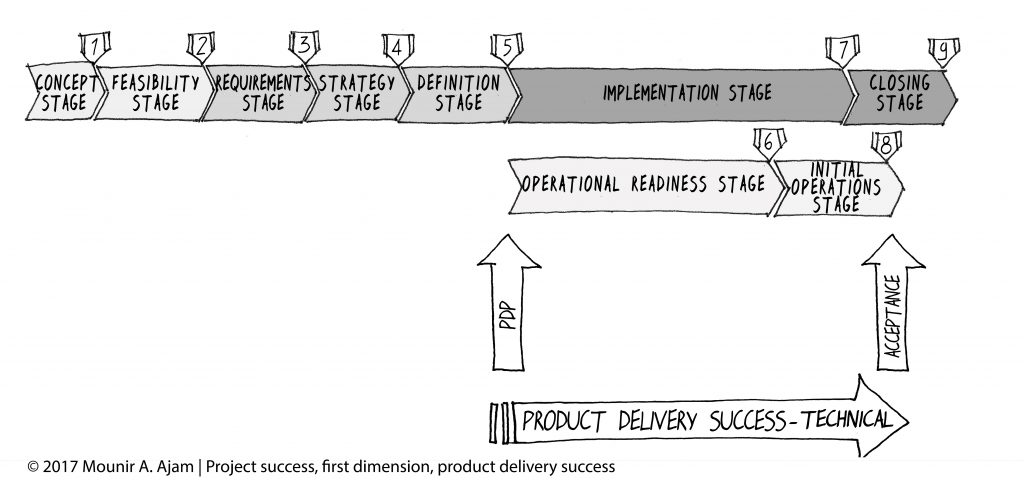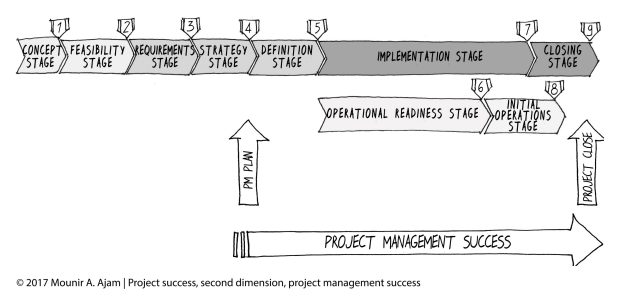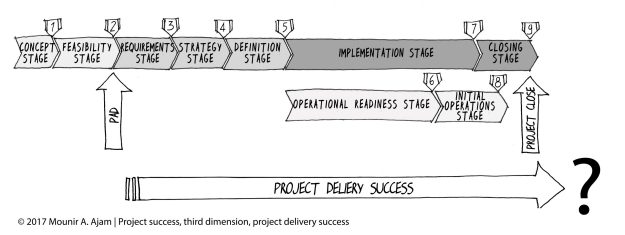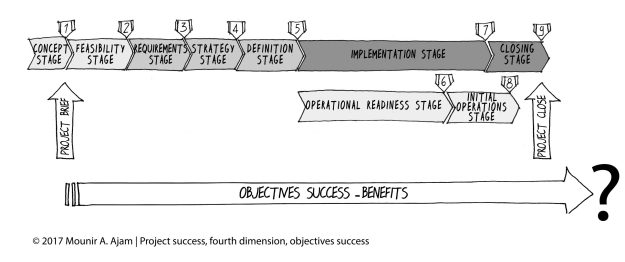How do we assess project success? Before one can answer this question, we need to provide the proper context and the various variables. For example, project success from whose perspective? Do we assess project management success, technical success, or objectives success? What would be the criteria for evaluating success? What would be the criteria for determining success for any of these dimensions? We will do our best to answer these questions and more here. Consequently, how to define success or failure? We need to look at this question from different viewpoints.
The foundation for the following text is from the SUKAD Way and our work in this area and our recent book, Leading Megaprojects, a Tailored Approach or Project Management beyond Waterfall and Agile.
The success of what?
When we say a project is successful, or a failure, what does it mean?
Did we deliver a bad or a good product?
Maybe we finished within the cost and schedule parameters.
Perhaps the project met all or some of its objectives.
In other words, the definition of success (and failure) might change from one stakeholder to another depending on what we are assessing and from which perspective. Therefore, SUKAD has developed The Four Dimensions of Project Success™. This is to determine the success of a project using four different dimensions[1], namely, product’s technical success, project management success, project delivery success, and objectives success (Ajam, 2017)[2].
The Four Dimensions of Project Success
The Four Dimensions of Project Success™ tells us when, along the project life cycle, to assess success, and from which perspective. Therefore, they are from the perspective of the project owner. However, how do we measure success, i.e., quantify it?
Before we can answer the question, we need to show the four dimensions. Therefore, the next four images show the various aspects of success, per the SUKAD Way Project Management Framework. These images are mostly self-explanatory. However, for detailed explanations, please refer to the website or earlier blog articles. These images are from Project Management beyond Waterfall and Agile book.




Assessing project success
Back to the question, how do we measure success; i.e., quantify it?
To assess the success of a project, usually one dimension at a time, we establish the criteria, which would consist of key performance indicators (KPIs) or metrics. These are highly dependent on the organizational system, maturity, and culture. Once the organization decides on the dimensions to assess and the criteria, we need to provide a way to judge success.
The Judgement
OK, we are performing an assessment, using the metrics or KPIs, so how do we judge and grant a project the label success or failure?
First, we do not believe in these two extremes. Therefore, we recommend four labels or grades. We realize that some prefer an either/or scenario and it is your choice. In our perspective, an ‘either/or’ view does not provide an adequate assessment that would help us continuously improve effectively and efficiently.
An organization, can adapt our four-grade model but modify the definitions, which is fine. The organization can also use a two, or three-grade model. In the end, and regardless of the model, organizations need to understand what went well or not.
The four-grade model
Success
An assessment of any of the four dimensions will be granted the label Success, graded successfully if we achieve its criteria within the control limit or tolerance allowed.
For example, we could define project management success[3] as achieving cost and schedule targets within the allowed tolerance of 10% (+/-). Therefore, a final project cost could be 109% of the budget, and the project would still be judged a success. Maybe some organizations like to make this allowance 5% (+/-) or even zero, which is a function of the organization[4].
Partial Success
If a project (overall or a specific dimension) missed one of its success criteria and still results in a useful or profitable product, we may label it as a partially successful project.
Partial Failure
If a project missed more than one of its success criteria and still results in a working/productive facility, we may label it as a partially failed project.
Some organizations may choose to combine these two designations and label: Challenged, Troubled, or anything else they prefer.
Failure
This would be for projects that are either terminated or missed most (if not all) of its key objectives.
Closing Comments
There are numerous posts online that discuss project success without any context. Also, there are various research reports and studies that discuss the vital topic without context. For example, we see studies (posts, reports) discussing project failure in relation to project overrun. This type of message is misleading and even dangerous since they are often about creating a sensation to sell something. What I mean here is this, projects experience overrun, therefore, we judge the project a failure. How is that?
An overrun, if significant, would likely mean the following: from a project management perspective, we might have a failure. However, the organizations could still make a huge profits, more than expected. In other words, project management might have a failure but objectives success is given!
In conclusion, look for the context. If no context, then it is likely the post, articles, studies are limited to project management with no assessment of objectives success.
[1] We will expand on these dimensions in Chapter 17.
[2] Once again, Project Management beyond Waterfall and Agile has a dedicated chapter on this topic, which we will summarize later when we propose the tailored approach.
[3] Remember, project management success is one of the four dimensions and we use it to assess the project management function.
[4] More on this point in the challenges, later.

I couldn’t resist commenting. Perfectly written!
Hi there! Do you know if they make any plugins to help with SEO?
I’m trying to get my blog to rank for some targeted
keywords but I’m not seeing very good gains. If you know of any please share.
Appreciate it!
I’m now not certain the place you’re getting your information, however good topic.
I needs to spend a while studying much more or
understanding more. Thank you for magnificent information I was in search of this info for my mission.
Everyone loves it when people come together and share thoughts.
Great site, stick with it!
Wonderful article! We will be linking to this particularly great article on our site.
Keep up the great writing.
Nice respond in return of this difficulty with
real arguments and describing everything regarding
that.
I am extremely inspired along with your writing skills and also with the layout to your weblog.
Is this a paid theme or did you customize it your self?
Either way keep up the nice high quality writing, it is uncommon to see a great weblog like this one today..
Thanks to my father who shared with me on the topic of this blog, this webpage is in fact amazing.
I am now not sure where you’re getting your info, but great topic.
I needs to spend some time studying more or figuring out more.
Thanks for wonderful info I used to be on the lookout for this info for my mission.
Hi everyone, it’s my first visit at this site, and post is in fact fruitful in favor
of me, keep up posting these articles or reviews.
Does your blog have a contact page? I’m having a tough time locating it but, I’d
like to shoot you an email. I’ve got some recommendations for your
blog you might be interested in hearing. Either way, great website
and I look forward to seeing it improve over time.